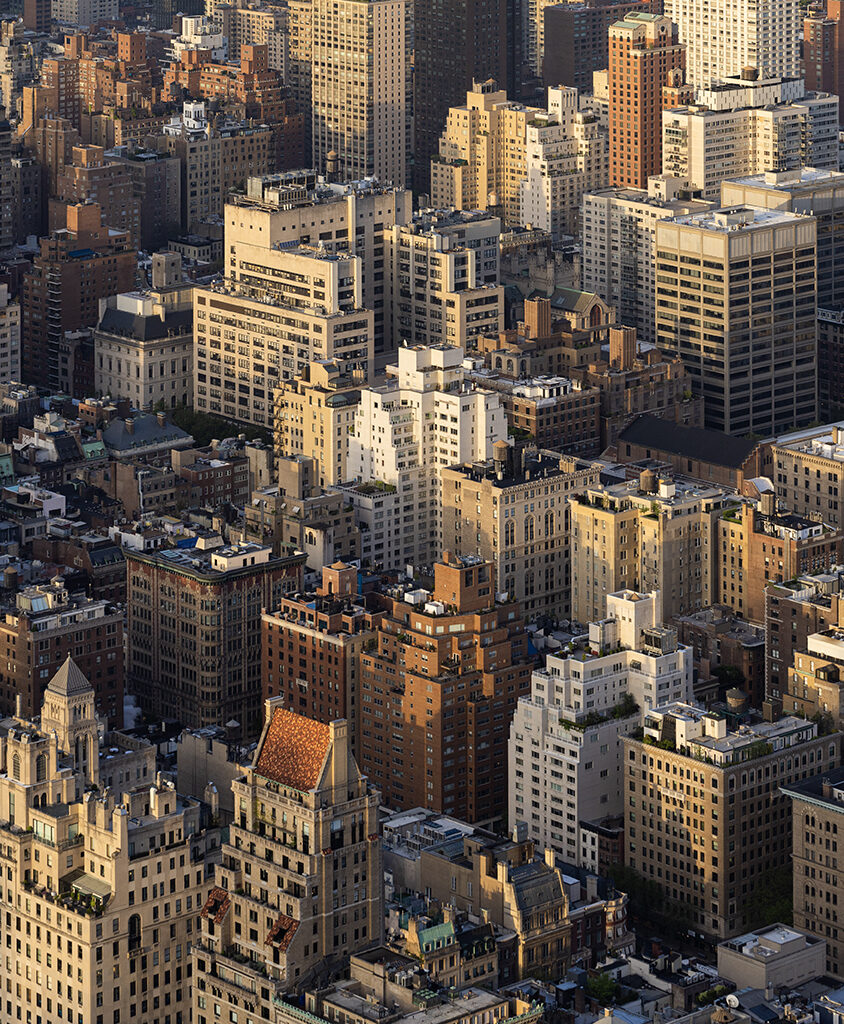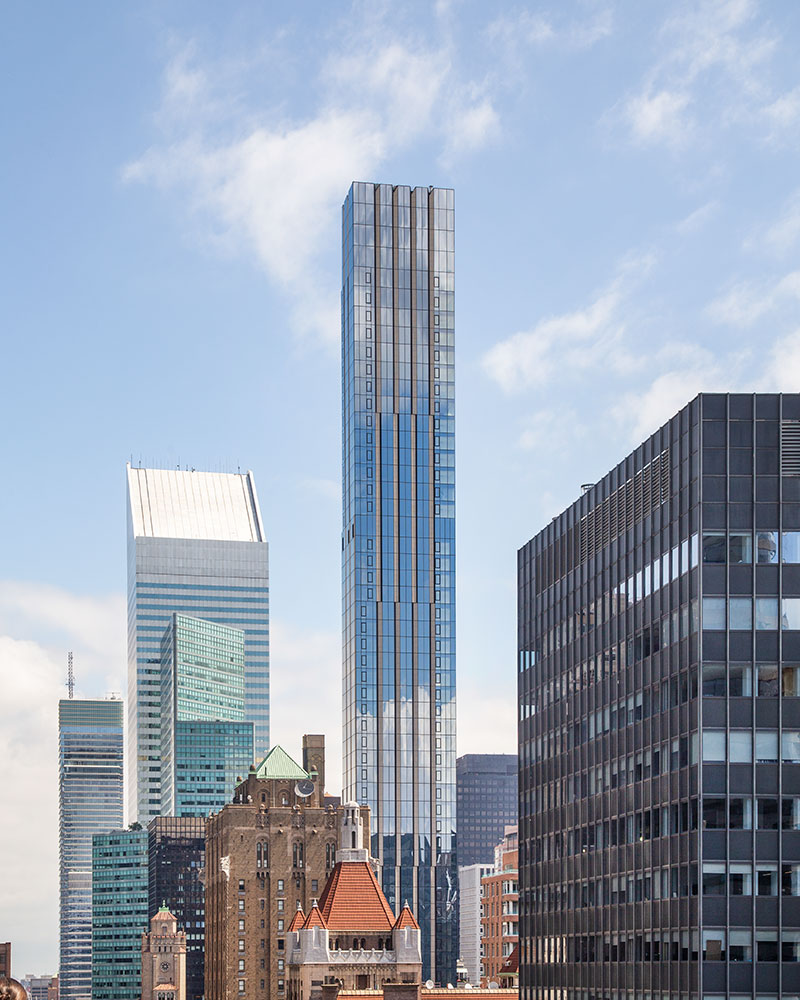Art Deco, a design movement that originated in the early 20th century, has always been synonymous with opulence, glamour, and innovation. Its unique blend of geometric patterns, bold lines, and luxurious materials made it a favorite among the elite and the avant-garde. This style, which first emerged in France before World War I, quickly spread to other parts of the world, including New York City. Art Deco in NYC, with its burgeoning skyscraper landscape and cosmopolitan ethos, became a fertile ground for the movement’s growth. The city’s architects and designers embraced this style, making it an integral part of the city’s architectural DNA.
NYC: The epicenter of art deco’s revival
Fast forward to the 21st century, and Art Deco is experiencing a renaissance in NYC. While the world has seen numerous design movements come and go, the allure of Art Deco remains undiminished. Today, both old and new buildings in the city proudly display Art Deco elements, a testament to its timeless appeal. Photographers, too, are drawn to these structures, capturing their essence in stunning shots that highlight the intricate details and grandeur of the style. This revival isn’t just limited to architecture. From fashion to graphic design, Art Deco’s influence is palpable, making NYC the epicenter of its modern-day revival.
Historical Overview

The origins of art deco: A brief recap
Art Deco’s roots can be traced back to the 1910s in Paris, where the movement first gained traction. It was a response to the Art Nouveau style, which was characterized by its organic, flowing lines. In contrast, Art Deco embraced a more structured, geometric approach. The 1925 Exposition Internationale des Arts Décoratifs et Industriels Modernes in Paris was a pivotal moment for the movement. It was here that Art Deco announced itself to the world, showcasing its modernist principles and its penchant for luxury and exuberance.
NYC’s original art deco era: The 1920s and 1930s
By the time the 1920s rolled around, Art Deco had crossed the Atlantic and found a new home in New York City. The Roaring Twenties, a period of economic prosperity and cultural dynamism, was the perfect backdrop for Art Deco’s rise in the city. NYC’s skyline began to transform, with iconic structures like the Chrysler Building and the Empire State Building showcasing the movement’s architectural prowess.
Photographers of the era were captivated by these towering edifices. Their lenses captured the sharp contrasts, geometric patterns, and lavish details that defined Art Deco architecture. These images not only documented the city’s changing landscape but also played a role in popularizing the style.
The 1930s saw the continuation of Art Deco in NYC, even as the Great Depression cast a shadow over the city. During this decade, the style evolved, incorporating more streamlined and functional elements. This was a reflection of the times, as the city grappled with economic challenges while still striving for aesthetic excellence.
Art deco architecture of New York City
Art Deco architecture thrived in New York City during the 1920s and 1930s, breaking away from traditional architectural norms. This style was marked by its verticality, unique ornamentation, and the use of innovative building materials like plastics, metals, and terra cotta. The architecture of this period was influenced by global decorative arts trends, the rise of mechanization, and New York City’s 1916 Zoning Resolution. The Roaring Twenties’ booming economy and commercial speculation led to a citywide construction surge.
Art Deco’s popularity ranged from towering skyscrapers to middle-class housing and municipal buildings. The Great Depression, however, shifted the style to more subdued applications. After World War II and the rise of the International Style, Art Deco’s popularity in the city waned. However, in the latter half of the 20th century, the city’s Art Deco was reevaluated and appreciated once again. Notable Art Deco structures like the Empire State and Chrysler buildings have become iconic parts of New York’s skyline.
Thought-provoking questions and insights:
- Influence of Global Trends: How did worldwide decorative arts trends and the rise of mechanization shape the unique Art Deco style seen in New York City?
- Economic Impact on Architecture: How did the economic conditions of the Roaring Twenties and the subsequent Great Depression influence the evolution and application of the Art Deco in NYC?
- Legacy of Art Deco: With structures like the Empire State and Chrysler buildings standing as testaments to the Art Deco era, how has this architectural style influenced modern construction and urban planning in New York City?
Triggers for the renaissance
Nostalgia and the search for authenticity
In the fast-paced digital age, there’s a growing yearning for tangible connections to the past. This nostalgia, a bittersweet longing for days gone by, has played a pivotal role in the resurgence of Art Deco. For many, Art Deco represents a golden age of design, a time when craftsmanship and aesthetic beauty were paramount. The style’s distinctive motifs and patterns evoke feelings of elegance, sophistication, and a simpler time. As modern life becomes increasingly virtual, the tangible, ornate details of Art Deco offer a comforting anchor to a bygone era.
The influence of pop culture and media
Movies, television shows, and literature have rekindled public interest in the Roaring Twenties and the subsequent Great Depression era. Films like “The Great Gatsby” and series like “Boardwalk Empire” showcase the opulence and glamour of the Art Deco period, making it desirable once more. These media representations, coupled with the allure of vintage fashion and design, have spurred a renewed appreciation for the aesthetics of the 1920s and 1930s.
Economic factors: The value of historic preservation
From an economic standpoint, preserving and restoring Art Deco buildings can be a lucrative investment. These structures, with their unique designs and rich histories, attract tourists and locals alike. By maintaining these architectural gems, property values often increase, and neighborhoods can undergo revitalization. Moreover, the adaptive reuse of these buildings, turning old factories or offices into modern lofts or commercial spaces, has proven to be both sustainable and economically beneficial.
Key Takeaways:
- The modern world’s complexities have led to a renewed appreciation for the tangible beauty and craftsmanship of the Art Deco era.
- Pop culture has played a significant role in reintroducing the glamour and allure of the 1920s and 1930s to a new generation.
- Economic incentives, coupled with the benefits of sustainability, make the preservation of Art Deco structures a wise investment.
Key elements of modern art deco design
Geometric patterns and bold lines
One of the most defining characteristics of Art Deco design is its use of geometric patterns. These patterns, often symmetrical and repetitive, are inspired by various sources, including ancient civilizations like the Egyptians and Aztecs. Bold, straight lines juxtaposed with sweeping curves create a dynamic tension in designs, making them instantly recognizable as Art Deco. These elements not only add visual interest but also convey a sense of modernity and progress.
Luxurious materials and rich colors
Art Deco is synonymous with luxury. During its heyday, designers used a plethora of high-end materials, including ivory, jade, and fine woods. Chrome, glass, and shiny metals also became popular, reflecting the era’s fascination with industry and technology. The color palette of Art Deco is equally rich, with deep hues like navy, gold, and emerald dominating interiors and architecture. These colors, combined with luxurious materials, create an ambiance of opulence and grandeur.
Integration of technology and traditional craftsmanship
The Art Deco era was a time of rapid technological advancement. This progress influenced design, leading to the integration of modern techniques with traditional craftsmanship. Buildings were constructed using the latest engineering marvels, yet they featured intricate handcrafted details. This blend of old and new is a hallmark of Art Deco, showcasing humanity’s ability to innovate while staying rooted in tradition.
Case studies: Art deco revival in NYC’s architecture
Restored landmarks: Chrysler Building’s new glory
The Chrysler Building, an iconic Art Deco skyscraper, stands tall in the heart of Manhattan. Completed in 1930, this building was once the tallest in the world and remains a testament to the grandeur of the Art Deco era. Over the years, the Chrysler Building underwent various renovations to preserve its original charm while adapting to modern needs.
Recent restoration efforts have focused on its terraced crown, intricate metalwork, and the famous eagle gargoyles. Today, the building shines brighter than ever, attracting tourists and photographers keen to capture its timeless beauty.
New constructions with deco flair: The Centrale in Midtown
While many associate Art Deco with historic landmarks, the style is also making a comeback in contemporary architecture. The Centrale, located in Midtown Manhattan, is a prime example.
This modern residential tower draws inspiration from classic Art Deco designs, incorporating geometric patterns, terraced setbacks, and a lavish facade. The Centrale seamlessly blends the old with the new, proving that Art Deco remains a relevant and sought-after design choice in today’s architectural landscape.
Interiors reimagined: The Rainbow Room’s modern deco makeover
The Rainbow Room, a historic restaurant and event space atop Rockefeller Center, has long been a symbol of New York City’s glamour. Originally opened in 1934, the venue is renowned for its Art Deco interiors. In recent years, the Rainbow Room underwent a significant renovation, breathing new life into its classic design. Modern touches were added, but the essence of the original Art Deco style was preserved. The result is a stunning fusion of past and present, where guests can dine and dance amidst a backdrop of NYC’s architectural history.
Art deco in contemporary NYC culture
Fashion: The return of Gatsby glamour
The 1920s, often referred to as “the jazz age” or “the age of the flapper,” was a time when fashion underwent a radical transformation. Art Deco’s influence permeated the fashion world, leading to the rise of the iconic flapper dress, adorned with geometric patterns and lavish embellishments. Today, this Gatsby-esque glamour is making a comeback. Modern fashion designers are drawing inspiration from the era, creating pieces that blend the opulence of the past with contemporary sensibilities. From runway shows to high street boutiques, the echoes of Art Deco are unmistakable.
Graphic Design: Deco-inspired branding and typography
Art Deco’s geometric patterns, bold lines, and vibrant colors have left an indelible mark on graphic design. Contemporary designers are revisiting these elements, incorporating them into branding, logos, and typography. The result is a fusion of vintage charm and modern design principles. This Deco-inspired aesthetic is especially prevalent in NYC, where businesses, from upscale restaurants to boutique stores, are adopting this style to create a unique brand identity.
Events and festivals celebrating the deco era
New York City, being the Art Deco capital of the world, hosts numerous events and festivals dedicated to celebrating this design movement. These events offer a deep dive into the era, from architecture tours showcasing the city’s Deco landmarks to themed parties that recreate the glamour of the 1920s. Such celebrations not only pay homage to the past but also highlight the enduring appeal of Art Deco in contemporary culture.
Challenges and critiques
Balancing modern needs with historical accuracy
The revival of Art Deco in NYC is not without its challenges. One of the primary concerns is striking a balance between modern requirements and historical accuracy. As architects and designers seek to infuse contemporary structures with Art Deco elements, there’s a risk of diluting the essence of the original style. While modern materials and techniques can replicate the look of the 1920s and 1930s, ensuring authenticity in design and spirit is a complex endeavor.
The debate over authenticity vs. imitation
With the resurgence of any historical style comes the debate over authenticity. Critics argue that many modern interpretations of Art Deco are mere imitations, lacking the depth and context of the original movement. There’s a fine line between drawing inspiration and merely replicating past designs. The challenge lies in innovating while paying homage, ensuring that the revived Art Deco doesn’t become a caricature of its former self.
The future of art deco in NYC
Upcoming projects with deco influences
The future of Art Deco in New York City looks promising. As the city continues to evolve, architects and developers are increasingly looking to the past for inspiration. Several upcoming projects in the city are drawing heavily from Art Deco aesthetics, blending the classic with the contemporary. These projects, while rooted in history, are equipped with modern amenities and sustainable features, showcasing the adaptability of the Art Deco style.
Education and preservation: Ensuring the legacy continues
For Art Deco to thrive in the future, education and preservation are crucial. Various institutions and organizations in NYC dedicate themselves to preserving Art Deco landmarks and educating the public about their significance. They regularly organize workshops, seminars, and tours, enabling enthusiasts to delve deeper into the movement’s history and influence. By fostering an appreciation for Art Deco, these initiatives ensure that the style remains relevant and cherished for generations to come.
The global influence of NYC’s art deco renaissance
New York City’s Art Deco revival is not just a local phenomenon. The city, being a global trendsetter, has influenced architects and designers worldwide. From London to Shanghai, elements of NYC’s Art Deco renaissance can be seen in contemporary projects. This global influence underscores the universal appeal of Art Deco and its enduring legacy in the world of design.
Conclusion
Art deco: A testament to NYC’s ever-evolving aesthetic spirit
New York City, with its dynamic skyline and rich architectural history, has always been at the forefront of design movements. Art Deco, with its blend of luxury, innovation, and geometric precision, is a testament to the city’s ever-evolving aesthetic spirit. From the towering skyscrapers of the 1920s to the contemporary structures adorned with Deco motifs, this style has left an indelible mark on NYC’s landscape.
The city’s embrace of Art Deco is not just about nostalgia or a mere architectural trend. It’s a reflection of New York’s ability to honor its past while continuously pushing the boundaries of design. The intricate details, bold patterns, and lavish materials of Art Deco buildings serve as daily reminders of a time when craftsmanship and artistry were paramount.
Embracing the past, inspiring the future
The resurgence of Art Deco in NYC is a beacon of inspiration. It showcases the city’s commitment to preserving its architectural heritage while adapting to the demands of the 21st century. This delicate balance between the old and the new is what makes New York a global design capital.
For photographers, designers, architects, and everyday citizens, the Art Deco structures of NYC are more than just buildings. They are symbols of resilience, creativity, and timeless beauty. As the city continues to grow and evolve, the legacy of Art Deco serves as a foundation, inspiring future generations to create, innovate, and pay homage to the golden age of design.





